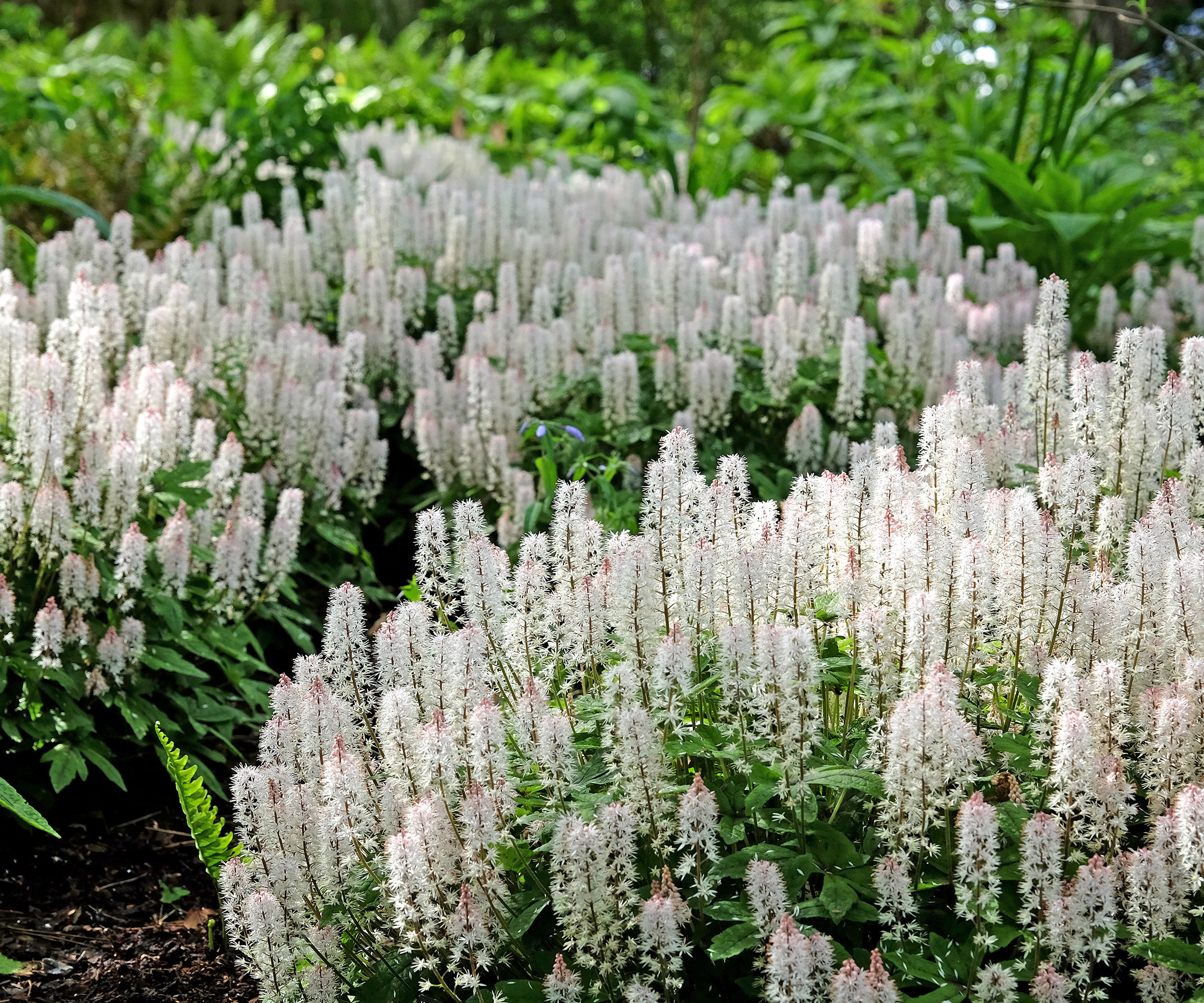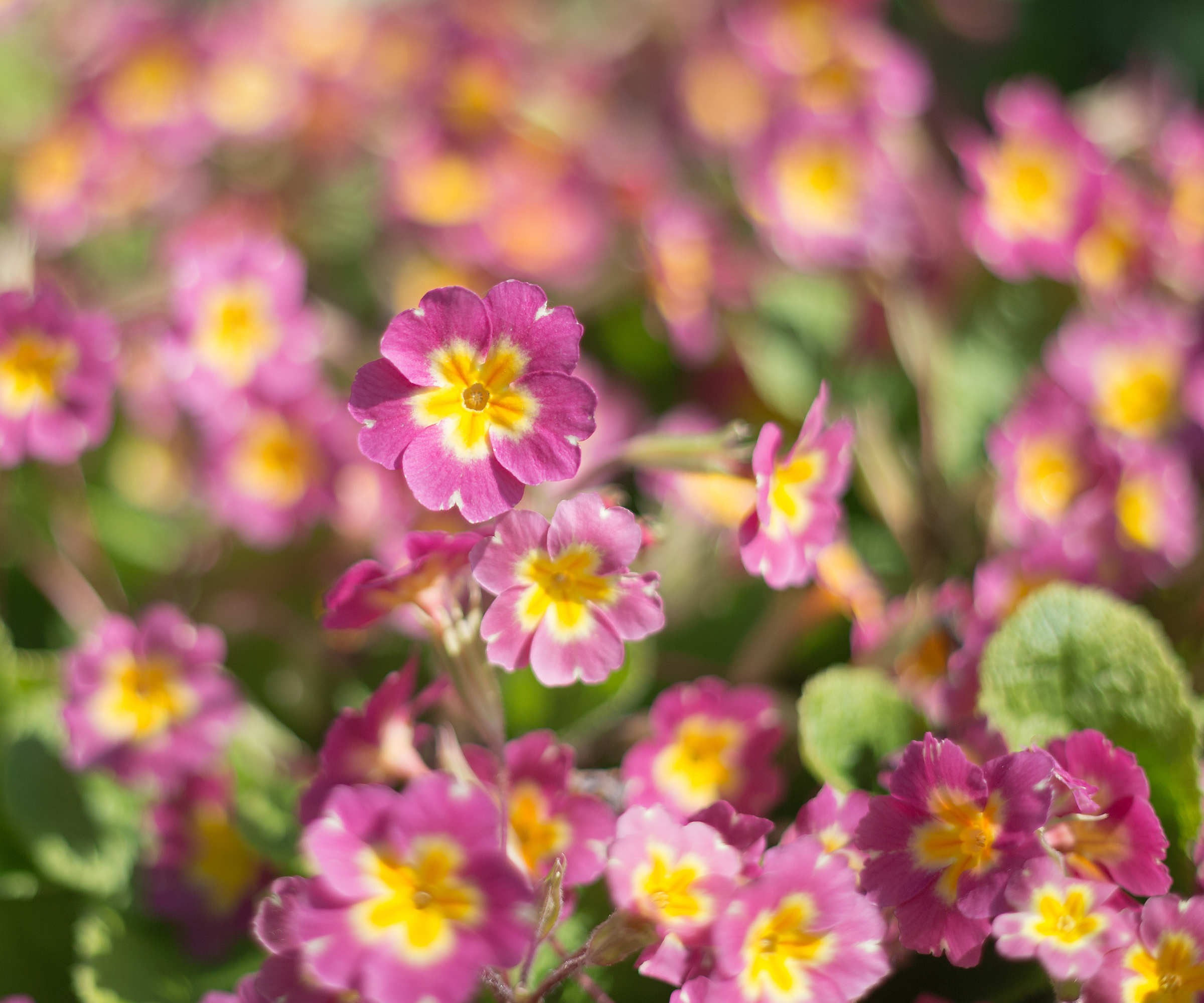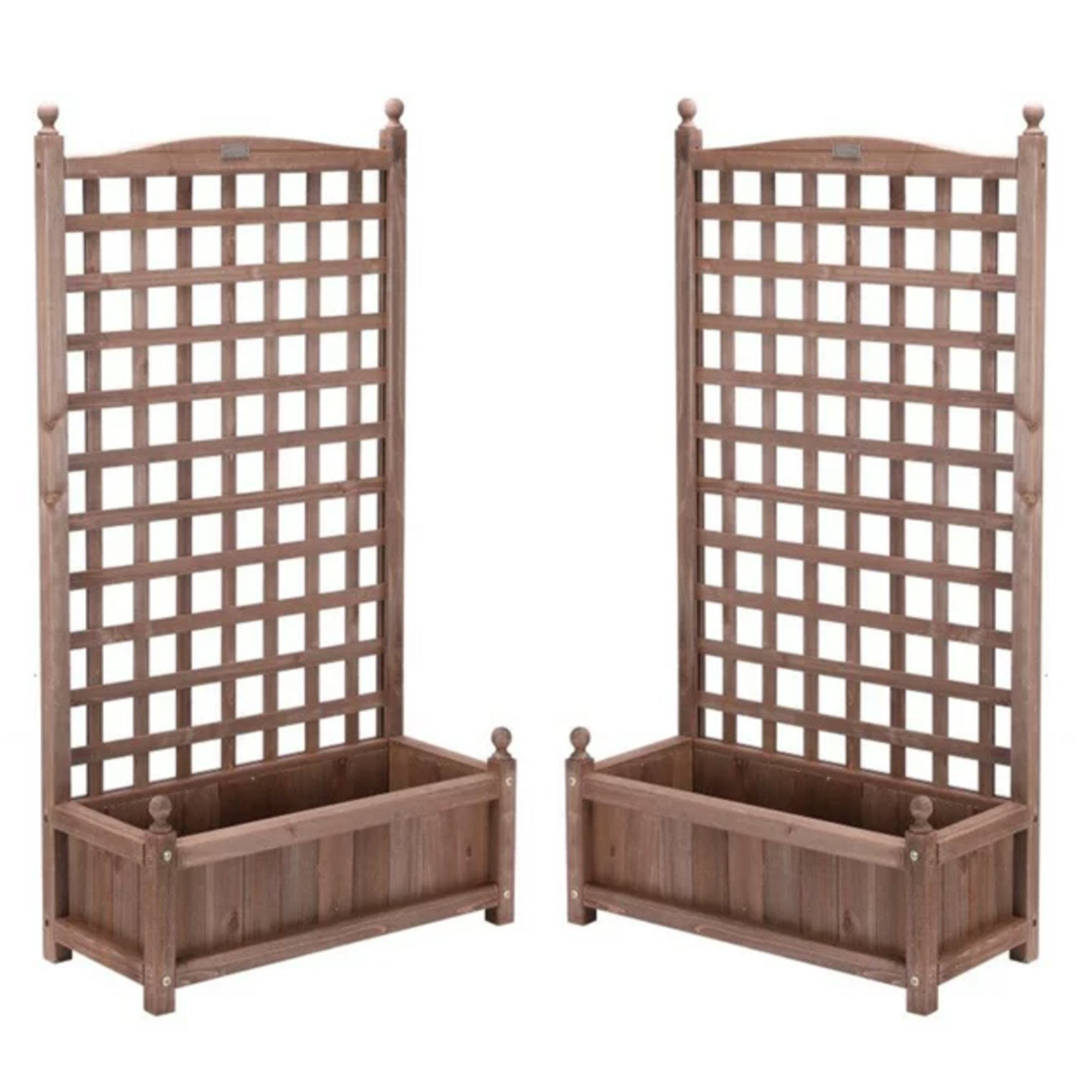11 part-shade perennials – reliable picks for your backyard
These varieties will thrive in partial shade, as well as work hard for their spot all year round


Shaded spots are among the more forgotten areas in a backyard, but there is always a plant to hand no matter what your situation. When it comes to part-shade/part-sun areas, the choice on offer is thankfully abundant.
I'm a perennial girl through and through, for me they make sense for most garden-situations. Whilst annuals have their place when it comes to adding an extra wow-factor to your backyard, in order to get real long lasting and low-maintenance color, a wealth of perennial planting is a good thing to aim for.
The value you get from shade plants and full-shade perennials that flower year after year is far superior to those which only bloom for a single season. So, when choosing plants for part shade, I recommend a healthy spread of perennials as well as evergreens, for well-structured long-lasting interest.

Choosing part-shade perennials for your plot: 11 top varieties
'Part shade refers to the amount of sun that a spot gets, it is a term often used to describe an area that gets between three and six hours of sunlight each day,' explains expert gardener and Homes & Gardens content editor Drew Swainston.
'It is a spot shaded for at least half the day, and a plant that wants partial shade will tend to prefer morning sunlight to the more intense afternoon sun. Partial shade, along with the term dappled shade, tends to be found under the canopy of trees and is an environment that can suit a wide variety of plants and shrubs.'
'Comparatively, full shade tends to be an area that gets very little direct sunlight each day. This can come from trees, or from the shade cast by buildings or fences, and many plants will struggle to cope with full shade,' says Drew.

Drew qualified as a journalist and wrote for many websites and publications, before studying for a horticulture qualification. He worked as a professional gardener for several years, specializing in kitchen gardening. He's now bringing his expertise and passion to Homes & Gardens as a member of our team.
1. Euphorbia amygdaloides

Also referred to by its common name 'wood spurge', this evergreen perennial, as its name suggests is a woodland plant by nature. It's a shade-loving plant which will thrive in a dappled light beneath a tree.
Design expertise in your inbox – from inspiring decorating ideas and beautiful celebrity homes to practical gardening advice and shopping round-ups.
Its attractive sprays of zesty flowers will be fantastic at suppressing weeds and covering bare patches of garden shade.
It will tolerate most soil types, including dry, it does however, need a well-drained soil. If you find it growing a little too well, it's important to keep it in check with pruning as it can become invasive, by removing any unwanted seedlings in the springtime. Deadhead spent blooms in late summer or early fall.
'When cut the plant produces a toxic milky sap, so take care when pruning and avoid where pets are likely to nibble,' says Melanie Griffith, garden expert and editor of Period Living.

Melanie is editor of Period Living, Britain’s best-selling period homes magazine. She also writes regular articles for Homesandgardens.com, with a particular focus on gardening.
2. Foam flower

This is a pick for moist soils, but not waterlogged, in part-shade or even full shade in a sheltered position. Also known as tiarella, these hard deciduous perennials are awash with cones of frothy cream and pink petals in late spring through summer.
These reliable performers are low maintenance and rarely require pruning, however they can fall prey to mildew and slugs. Increase your stocks even more by dividing plants in spring.
You can try these cutting edge foam flowers at Nature Hills.
3. Rodgersia

Rodgersia are plants for wet soil, so if your backyard is damp and boggy then this variety is a great choice for part shade. Avoid areas beneath trees and close to fences as soil tends to be too dry for these deciduous perennials.
They will thrive in areas around ponds, where their lush leaves provide foliage and texture for most of the year, and in summer their delicate clusters of pale-pink flowers will add interest.
Once they're established they'll be great at suppressing weeds and can be propagated by division in early spring. Keep an eye out for slugs, who love to nibble their lush leaves. Cut plants back by a third after flowering.
4. Hydrangeas

The large flowerheads of hydrangeas are instantly recognizable, and are my personal favorite part shade perennial. Avoid planting them in areas that are too exposed where they will still receive some light.
Most soil-types are tolerated by hydrangeas however, moist, well draining soil is their preference. If you have a courtyard garden, smaller varieties can be grown as plants for north facing walls, in containers.
'Fertilise in the spring and give them a good weekly watering in warm weather. Whether your hydrangea is a mophead or lacecap variety will dictate the best time for deadheading,' explains Melanie Griffiths.
5. Lamprocapnos

These easy-to-grow part shade perennials will bloom from April through June, providing interest to bridge the gap between your spring bulbs and summer plants.
Also known by their common name 'bleeding heart', and their former botanical name of Dicentra, their blooms are like tiny hearts which appear to be weeping.
Lamprocapnos prefers partial shade, and are great for filling the gap between taller plants. They prefer neutral soil and moist conditions, so water regularly.
Only cut back bleeding hearts once the foliage starts to fade to yellow and brown, and give it a good feed and mulch in the spring. Try 10 these pink fringed fern leaf bleeding heart plants at Walmart.
6. Clematis

If you're looking for part shade perennials, you may want to pause for a small celebration, because there are few gardeners who won't love these climbing plants.
The star-shaped flower heads of clematis will love a partially shaded spot, on a north or east facing wall, since strong sunlight will cause the color of their petals to fade. It's important to keep the base of the plant in shade however, whether this is by a wall or by surrounding plants.
They will need climbing plant supports as they are prolific growers, but trained up an arbor or wall is where they look their best in any case.
We like the hardy Boulevard® Corinne™ Clematis at Nature Hills for partial shade.
Shop trellis for climbing plants
7. Hellebores

Hellebores generally prefer light shade and do need some sun. Some varieties will bloom before spring bulbs kick in and their rosy blooms will give much valued winter interest. Not to mention their foliage proving interest year round. they're also great sources of food for bees.
My favorite thing about hellebores is how easily you can multiply them. You can lift and divide them in fall and each year you will find that the plants have grown plenty well enough to do this.
As low growing plants they will work well dotted around the backyard at the front of borders or in pots.
8. Liriope muscari

These evergreen part shade perennials are also known as lily turf, or monkey grass. Their purple flowerheads resemble bunches of grapes and bloom in fall. Later, black berries appear. All the while their grassy leaves providing excellent ground cover.
'Liriopes will thrive in a sheltered spot in most soil types, as long as it’s moist but well draining. It tolerates part to full shade, and is perfect for positioning beneath trees and shrubs,' says Holly Crossley, garden expert and gardens writer.
'The plants are low maintenance – simply keep the soil fairly moist and cut back foliage in the spring. At this time the plants can also be propagated by division,' she says.

Holly is a former allotment keeper and professional gardener. She now spends her time tending to her backyard and writing about gardens and outdoor living for Homes & Gardens.
9. Primula (primrose)

I've included primula in this list of part shade perennials, even though it tolerates a range of conditions aside from part shade.
These easy-to-grow perennials will thrive in a variety of garden situations in sun or shade. You will have also heard of them as primroses, they are associated with the springtime but some species will bloom in fall and some even have snow resilient flowers.
Their flowers are bold and bright and come in a range of colors, and are often scented. They attract pollinators as well as resisting deer and rabbits. Primula vulgaris are poisonous however so don't grow them if you have dogs or cats.
10. Delphiniums

I tentatively include these on the list, as though delphiniums prefer sunny spots, sometimes they are advertised as part shade perennials. They would be on the very lighter end of the shade/part shade spectrum and, unless grown from seed, they are expensive plants, so not one that you want to risk growing unless you were sure you would get results.
They are beautiful plants however and if you are successful with them they can grow up to 6ft tall and be real statements in a border year after year. They can fall prey to slugs and need to be kept moist.
11. Pulmonaria

There's no question mark over Pulmonaria (also known as lungwort), these are perennials that you can rely on performing in semi-shade to deep shade. They are semi-evergreen, hardy and low-maintenance, giving some form of interest in almost every season.
Whether that's their flowers, which open in the later winter in a pink color, slowly turning to inky blue by spring. Their foliage has a lively pattern which can be enjoyed in summer too.
They are low growing, so if planting in borders, position at the front. Remove dead or diseased foliage after they've flowered in spring, and whilst doing so you can divide plants if you wish, or allow them to multiply naturally, as they tend to do.
FAQs
Will perennials grow in partial shade?
Not all perennials will tolerate partial shade, but there are many varieties which will thrive in a partially shaded spot. Varieties include, but are not limited to, Liriope muscari, clematis, hellebores, dicentra and hydrangeas.
As with choosing all plants for your backyard, it's important to know your soil type, as well as how much light each area gets each day, and choose plants accordingly to suit these requirements. Lack of research could lead to disappointment so it's best not to leave things to chance, particularly when it comes to pricey plants.
Though south-facing gardens tend to be the most sought after, when temperatures are high during summer, you may find yourself wishing for a shadier backyard.
Consider also planting some of the best shade-tolerant trees under large, established specimens, which can help add layers to your planting borders.

Teresa was part of a team that launched Easy Gardens magazine two years ago and edited it for some time. Teresa has been a Gardens Editor at Homes & Gardens, Country Homes & Interiors and Living Etc magazine since 2020 and has developed close working relationships with top garden designers, and has been exposed to an array of rich garden content and expertise.


